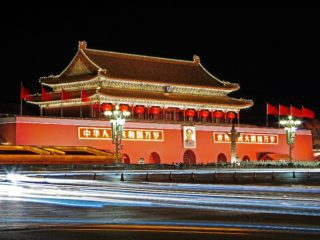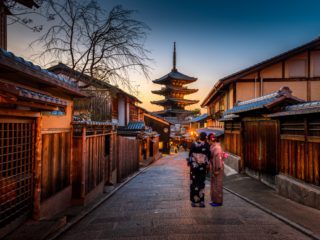In our Social media fast facts series, we examine social networks, local influencers and popular brands on social around the world. This month, we’ll be focusing on the Latin American market, and with the World Cup only two months away, we’ll be taking an extra close look at Brazil.
Latin American nations share elements of a common cultural and linguistic heritage, but each nation has its own pre-colonial traditions and history, which have created the countries they are today.
Social networks: what’s popular in Latin America?
Latin America had 159 million internet users in 2013, a rise of 21% from 2012. Forty-two per cent of these users were from Brazil, while 15% were from Mexico, 11% from Argentina, and 7% from Colombia.
Mobile internet is becoming an popular way to access the internet and social media in Latin America, with eMarketer predicting that there will be 120.8 million mobile internet users in Brazil alone by 2017.
A staggering 94.1% of internet users in Latin America are using social networks, and Latin American nations take five of the top ten spots for the most time spent on social networks (from Brazil at 13.3 hours a month, to Colombia at almost six hours a month).
Facebook is the most popular social network in Latin America, with around 179 million users, growing from 116 million users in June 2011. Nineteen per cent of Facebook’s user base lives in Latin America.
Brazil had 65 million Facebook users by 2013, and was second only to the USA for the most represented nation on Facebook. Almost 95% of time spent on social media in Brazil is spent on Facebook.
In 2012 Semiocast reported that Brazil was second to the USA in total number of Twitter users. Brazil had 41.2 million users, opposed to the USA’s more than 140 million. Twitter is the 15th most visited site in Brazil, below Facebook, YouTube and LinkedIn.
In 2013, Peer Reach found that Brazil was the fifth biggest Twitter user, with 4.3% of global users (behind the UK and ahead of Spain), while Mexico had 3%, Argentina 2.6% and Colombia 1.9%. However, when it looked at the number of active Twitter users compared to internet users, it found that Venezuela led Latin America, with 14% of internet users also using Twitter. Argentina had 12%, Colombia 10%, Mexico 8% and Brazil 5%.
YouTube
Almost 60% of Latin American YouTube users are under 34. It’s the largest market for YouTube outside of the USA.
By July 2013, YouTube accounted for 16.7% of all social network visits made by Brazilians each month.
LinkedIn opened its Brazil office in 2011, when 14 million of its 135 million members were Latin American, and six million were from Brazil. By 2013, Brazilian LinkedIn membership had risen to 11 million (the same as the UK). Brazil has also become the second fastest growing market for mobile LinkedIn use.
Colombia is the second fastest growing country on LinkedIn.
Google+
Brazil is the third biggest user of Google Plus, with more than 2 million users. Mexico has more than 364,000 users, and Colombia more than 318,000. The other Latin American nations have between 236,000 users (Argentina) and 16,000 users (Bolivia).
By July 2013, Google Plus accounted for just 0.74% of all social network visits made by Brazilians each month.
Other social networks
Ask.fm
More than 8% of visitors to Ask.fm come from Brazil, making it second only to Poland, which has the largest Ask.fm user base. It grew from 247,000 unique visitors from Latin America in November 2011, to almost 13 million unique visitors in November 2012.
Pinterest and its competitors
Pinterest reached 1.3 million Latin American users in April 2012. By July 2013 it had almost 1 million users in Mexico (its fifth largest market), and around 750,000 users in Brazil (its sixth). It also had less than 500,000 users in Argentina and Colombia.
Two per cent of Pinterest users come from Mexico, and 1.5% from Brazil. Competitor, weheartit, gets 2.6% of its users from Mexico and 2.1% from Brazil and Argentina.
Okrut
Google’s previous attempt at a social network, Okrut, is still popular in Brazil, with almost 47% of its visitors coming from the country. It received 1.73% of visits made by Brazilians to social networks in July 2013.
Badoo
Dating-focused social network, Badoo, is quite popular in Latin America. It notches up 6.6% of its visitors from Brazil, 4.3% from Mexico, 3.8% from Argentina and 2.5% from Venezuela.
Focus on Brazil Influencers: brands, celebrities & sports stars
In 2013, Cushman & Wakefield reported that Brazil was the only Latin American country in the world’s top 20 markets for internet retail sales in 2012. Two Latin American countries were also listed in fastest growing markets for online retail sales: Mexico (fourth) and Colombia (fifth).
It was estimated that Latin American ecommerce would generate $69 billion in sales in 2013, and an increase of 60.5% from 2011. Big consumer brands like L’Oreal and Nike have launched major social media campaigns in Brazil to capitalise on this, acquiring millions of followers in the process.
The most popular Facebook page in Brazil is Facebook for every phone, which has 33 million local fans. That’s followed by Brazilian drinks brand, Guaraná Antarctica (with more than 16 million local fans), and Coca-Cola (which also has over 16 million local fans).
Perhaps unsurprisingly, the two most followed Twitter accounts in Brazil belong to Brazilian football players, 18.2 million people follow @KAKA, and @neymarjr has 9.93 million followers. Brazilian singer/songwriter @ivetesangalo has more than 9.55 million followers.
YouTube
Disney Collector Brazil is the most popular YouTube channel in Brazil, with more than 1.5 billion views. A Brazilian music project for children, called Galinha Pintadinha (aka The Dappled Chicken), also has more than one billion views. Finally, Brazilian singer/songwriter, Michel Teló, has more than 842 million views on his channel.
Language fast facts
- Spanish is the official language in: Argentina, Chile, Colombia, Uruguay, Venezuela, Guatemala, Honduras, El Salvador, Nicaragua, Costa Rica and Panama (although many citizens also speak one of several Amerindian languages). Ecuador has Castilian Spanish as its official language.
- Bolivia and Peru have three official languages, Spanish, Quechua and Aymara. Paraguay has two official languages, Spanish and Guarani.
- Portuguese is the official language of Brazil.
- Dutch is the official language of Suriname.
- Guyana has no official language. In addition to English and Amerindian dialects, Creole and Hindi dialects are also spoken.
- Although Spanish is the main language spoken in Mexico, it has not made it the official language, out of respect of the local indigenous populations.
- English is the official language of Belize.
Cultural fast facts
- Brazil has a highly diverse culture, the result of the merging over many centuries of indigenous culture with outside influence from European colonisation and traders.
- A high value is placed on relationships in Brazil, both familial and business relationships. For that reason, people often prefer to get to know each other before making deals.
- Black and purple are seen as mourning colours in Brazil, so avoid these when choosing a gift.
- The roots of the Rio Carnival can be found in the cultures of ancient Rome and Greece, who also celebrated the arrival of spring with feasting and large parties.
- Mexico is the most populous Spanish speaking country in the world, followed by Colombia, the United States, and Argentina. Spain is only fifth in the list (with the other countries in the top 10 all from Central or South America).
Fast historical facts
- Spain and Portugal signed the Treaty of Tordesillas on7th June 1494. The treaty, reinforced by papal bulls, provided a clear division of newly discovered land. Spain was granted ownership over all ‘new’ land west of the demarcation line (shown above), while Portugal could take land east of the line. Pope Julius II agreed to a treaty change in 1506, when the boundary was moved to the west, allowing Portugal to claim the coast of Brazil (and the rest of it over subsequent years).
- It’s estimated that Brazil has been inhabited for around 8,000 years, by nomadic and semi-nomadic tribes. By the time the Portuguese arrived, there were about 2,000 tribes and settlements. Some indigenous tribes are still living in the Brazilian rainforest. The Maya civilization inhabited Belize from around 1500bc.
- The Dutch had a colony on the coast of Brazil from 1630 to 1661, which they christened New Holland. However, it was ceded to Portugal when Holland signed the Treaty of The Hague on 6th August 1661.
- Independence: the Mexican War of Independence lasted more than 11 years (1810-21).
- After the Mexican war, Guatemala, Honduras, El Salvador, Nicaragua and Costa Rica declared independence from Spain and became part of the First Mexican Empire, which was abolished in 1823 and replaced with the Federal Republic of Central America, which lasted until 1838, when the member states became independent states.
- Colombia, Venezuela, Ecuador, Panama, and parts of Peru, Guyana and Brazil formed the Republic of Gran Colombia in 1819 (which lasted until 1831), although member regions continued to fight with Spain until the early 1820s.
- Bolivia and Brazil both claimed independence from their colonial powers in 1825.
- Paraguay declared independence from Spain in 1811, Chile in 1818, and Uruguay in 1830.
- Two countries didn’t declare independence until the late 20th Century. Suriname became independent from Holland in 1975, and Belize was granted independence from Britain (becoming a Commonwealth member) in 1981.
Check out previous blogs in our series looking at regional use of social media





